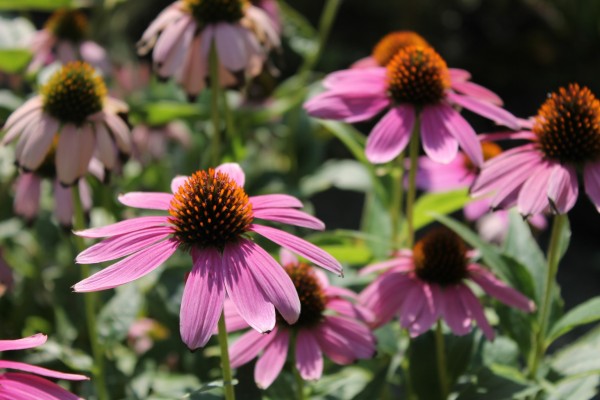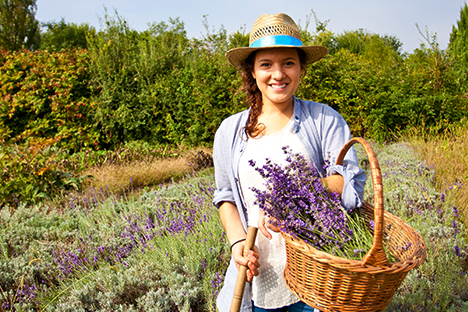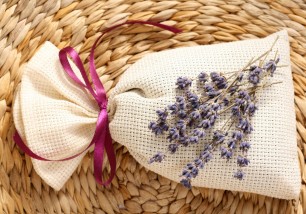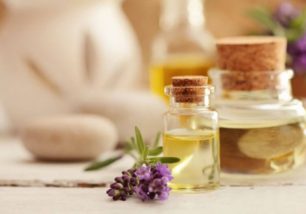CONEFLOWER
BOTANICAL NAME:Echinacea angustifolia DC., Echinacea pallida Briton, Echinacea purpurea Moench

PLANT DATA
| Common Name: | Coneflower |
| Botanical Name: | Echinacea angustifolia DC., Echinacea pallida Briton, Echinacea purpurea Moench |
| Family: | Asteraceae |
| Origin: | North America and Mexico |
| Other names: | ES: Equinàcea FR: Echinacèe DE: Sonnenhut |
Latest tag


They are multiannual species with a fasciculated root system, with thick and secure roots. The stem is erect, somewhat branched, hairy or hairless, that has many or few leaves that can be lanceolate or elliptic, depending on the species. They have large flower heads made up of ligulate flowers of varying length and color (white, pink, purple) and tubular center flowers. The fruit is a pappus tetragon. The plant height varies according to species.
OTHER SPECIES:
Many species and varieties belong to the Echinacea genus, but the species for herbal uses are only:
- Echinacea angustifolia DC.
- Echinacea pallida Britton.
- Echinacea purpurea (L.) Moench.
The roots of these three species are used because the roots are rich in active ingredients. Only with Echinacea purpurea (L.) Moench. are the flower, aerial parts used.
HERBAL TEA CUT & POWDER
After harvesting, the roots of Echinacea angustifolia and Echinacea pallida are washed, cut and put to dry at a temperature around 45°C. After drying, the product can be milled to obtain a powder, or the tisane cut for the preparation of decoctions and infusions.
TINCTURE
The fresh roots from Echinacea angustifolia and Echinacea pallida are left to macerate for a month in alcohol in a 55-proof hydro alcoholic solution. A tincture is obtained and is usually used as a remedy for the flu.
JUICE
The fresh tops of the flowers of Echinacea purpurea can be pressed to get coneflower juice.
Climate and soil:
The species belonging to the genus “Echinacea” can adapt easily to different environments.
Generally speaking, they prefer well drained soils, of medium texture or slightly sandy, with good sun exposure.
Planting and propagation:
The propagation is usually done by direct sowing in the field, or by transplanting of seedlings obtained in the nursery. Attention should be paid to the germination rate of the seed: this is good for Echinacea purpurea and Echinacea pallida, but low for Echinacea angustifolia.
It is also possible to divide the tufts, but this method is less common.
The planting is carried out in early Spring or in Autumn.
Crop duration:
The crop usually lasts from 2 to 4 years.
Cultivation care:
A good seedbed preparation before the planting is very important.
During the cultivation, several hoeings in the inter-row are required, to control any weed infestation.
Depending on the environmental conditions, some emergency irrigations can be necessary, especially during prolonged drought times.
In order to increase the development of the roots, it is advisable to cut the flower buds.
Harvesting:
Only the aerial parts of Echinacea purpurea are harvested, when they are in full bloom.
The roots, of all the three different species, are harvested in the Autumn or in the Winter of the second year, before the vegetative restart.
After the cutting of the upper parts, the harvesting of Echinacea roots can be carried out using machines for the harvesting of underground parts.
The yields are strongly dependent on the climatic and soil conditions, and generally they increase until the 3rd year from planting, both for the roots and for the upper part.
The yield of aerial parts is usually of 7-9 tons/hectare of dried material, and of 3-5 tons/hectare of dried material for the roots.
Parts of the plants used:
Echinacea angustifolia, E. pallida, E.purpurea roots
Aerial flowering parts of E. purpurea
Properties and uses:
Preparations based on Echinacea are effective immunostimulants.
They are able to increase the endogenous defenses of the organism, by stimulating the immune system in a non-specific way, through phagocytosis, cytokines and other factors.
Echinacea is also effective as a preventive treatment or as an added support for cold-diseases, flu-syndromes and affections of the upper respiratory tract.
Echinacea extracts are also able to counteract the immunodeficiency caused by antibiotic therapies.
The plant is also utilized for chronic urinary conditions, for example relapsing vaginal mycosis caused by Candida.
Echinacea has good scar healing and skin regenerating properties, and it used externally in the treatment of ulcers, wounds, burns, dermatitis, mouth ulcers.
Extracts are also used in the formulation of cosmetics with skin-purifying or firming action and for acne troubled skin. The drug exhibits smoothing, anti-wrinkles and epithelizing properties.



